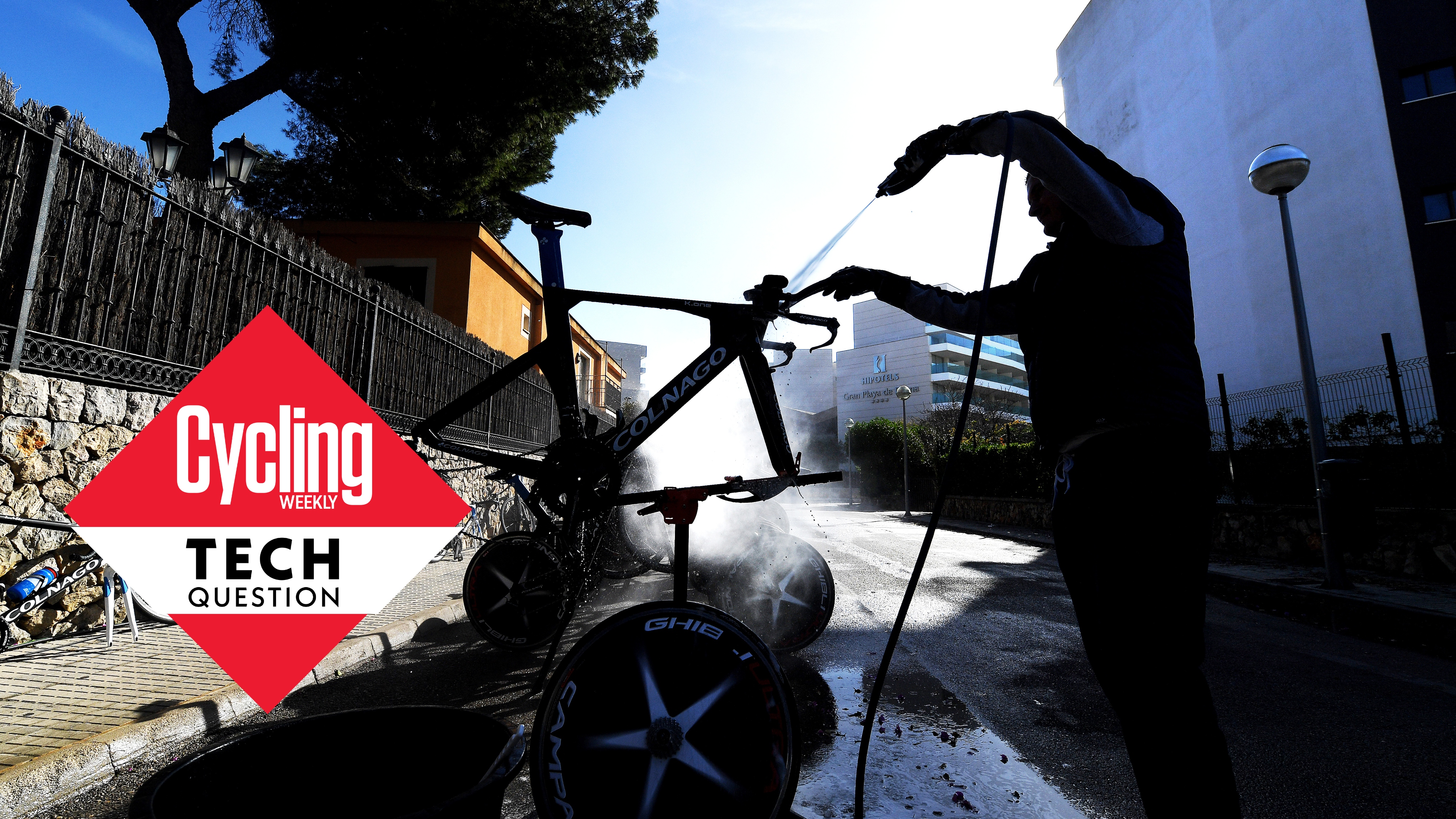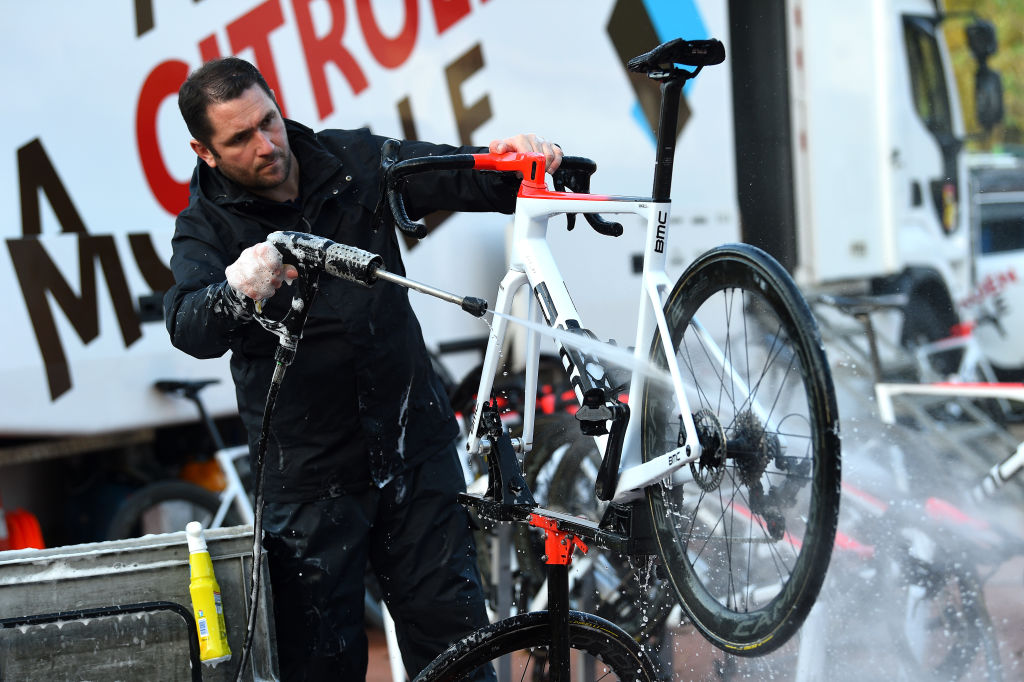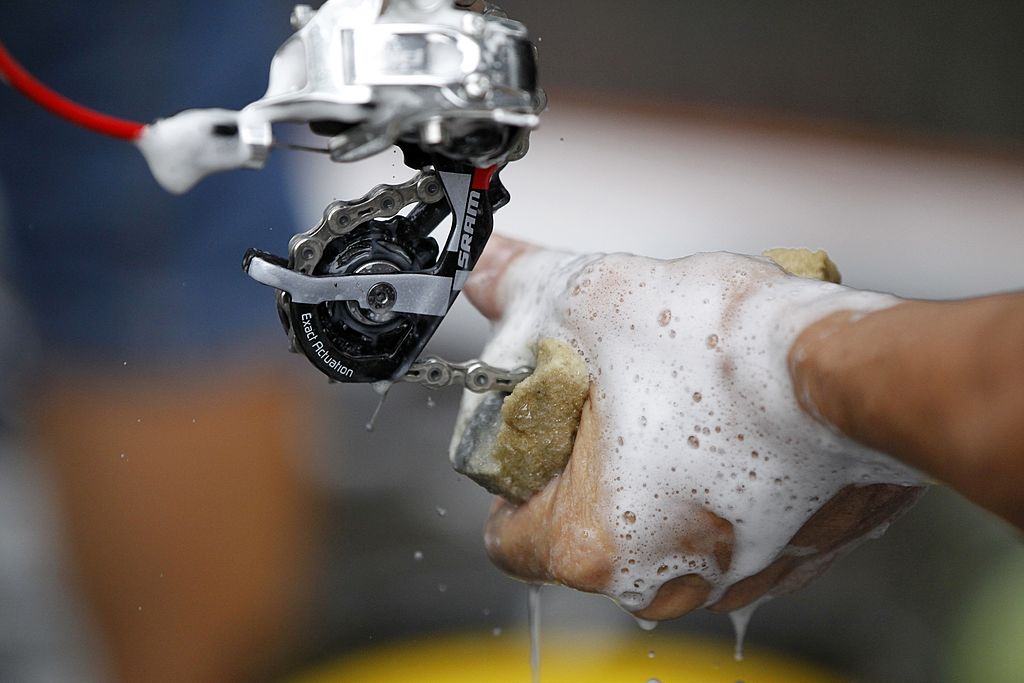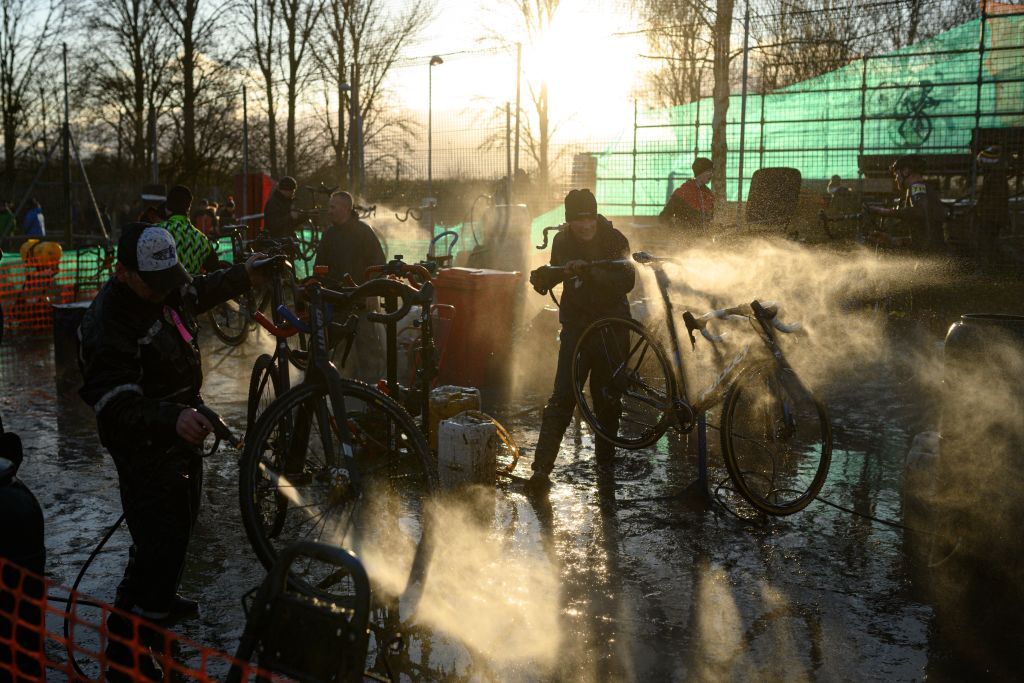
We’ve all seen pictures of professional mechanics at races 'jet washing' team bikes: often grainy, emotive if that's the kind of thing you like, pressurised water flying in all directions. It certainly looks the business, but is that the best way to clean your bike?
As a mechanic who splits his time between working on pro team bikes and customer bikes (and occasionally even my own bike), I’m in a unique position to weigh up the pros and cons of all kinds of systems and services, including the humble bike wash. When a customer asks, “is it okay to jet wash [pressure wash is the proper terminology] my bike? That’s what the pros do”. My answer is always the same, “absolutely” I say, “but you (or often, I) will need to spend tomorrow carrying out a full strip, regrease and rebuild!”
But is it that simple?
I’ve seen the damage that pressure washers can do but I also know that there is a time and a place for a pressure washer. Things can be swayed by the environment and by the way you use your bike, so here’s my honest answer about when it’s okay to pressure wash and when it’s best avoided.
The reason for avoiding the pressure washer

Pressure washers are fast - there’s a reason why you see them being used in cyclocross races, when mechanics sometimes have less than three minutes to get the bike ready for the next half-a-lap bike change. It’s logical therefore that if you want to get your bike washed quickly when you get back from a freezing cold, wet ride, that the fastest option is the obvious choice right? Wrong! Even many pro mechanics use this option sparingly, due to the damage it can potentially do.
It’s important to understand that it’s not the pressure washer itself which does the damage, rather it’s the combination of the water that it forces in and then leaves behind, and the grease that the water pressure removes or at least disturbs.
The grease used in bikes has two purposes and it’s important to understand the difference. There is grease inside the bearings themselves (BB/hub/pulleys/headset), which is there to lubricate the bearing, but we also apply grease in certain places to act as a barrier to water, mud and grime.
In short, you’ve created the perfect environment for corrosion
You’d have to pressure wash a bike a lot to remove the grease from inside the bearing, and that may not even be possible if you’ve fitted good quality bearings, but it’s very easy to remove the grease that we put in places to act as a barrier. If this is removed, you’ve now exposed the bare metal, and introduced water into an area which it’s unlikely to evaporate out of - in short, you’ve created the perfect environment for corrosion.
Team bikes get washed every single day that they are raced. On some of the richest teams - with ample support staff - bikes will also be semi-rebuilt on a daily basis, especially on big races like grand tours. But sometimes, with longer transfers between stages, or with smaller teams, you will see the mechanics favouring a gentler approach. It may take a fraction longer but it means that you don’t need to work on rebuilding the bikes once they are clean every single day and you can simply focus on what needs doing.
It’s easy to get your own bike clean without a pressure washer

So, if you’re not going to use a pressure washer, how can you clean your bike well, and ideally, quickly?
I like to think of the bike as two separate entities: the drivetrain is all the really mucky bits, and the 'rest of the bike' is everything which is mostly cosmetic. Therefore I have an old bidon and brush for the dirty drivetrain bits, a big bucket and sponge for the rest of the bike, and a simple garden hose. And, I'm armed with the knowledge that here will never be a better time to wash the bike than when it’s fresh from the ride.
If you’re quick, in most instances, a garden hose on a light setting will do 90% of what a pressure washer is capable of, whether it’s talking grime from a winter road ride or even full mud from a British “gravel” off-road ride.
Scrubbing the drivetrain with bio-degreaser liquifies all the dirt, grime, old oil and contaminates. Then, the whole lot can be easily removed with the hose straight away - the speed ensures that the degreaser doesn’t work its way into the bearings and/or anywhere else you don’t want it.
Cleaning the 'rest of the bike' is ideally done with a sponge and a bucket of warm bike specific soap or wash. Simple sponges are best and again by working quickly you’ll get all the dirt off both sides in less than a couple of minutes. A quick spray again with the hose is all you need to remove any last dirt and the soapy water itself.
The most important and commonly missed step is drying and re-lubing the drivetrain. We use an airline with the team bikes but towels are fine at home. Once dry, we lube the chain and run through the gears to smear a very thin layer of lube or wax on all the sprockets to drive out any last moisture. On the majority of race bikes and at home I limit myself to five minutes per bike - which is probably less time than it takes to set up the pressure washer.
Your bike at home doesn’t have to be pristine unless you want it to be, but the drivetrain wash, dry and lube is critical to it all working well for longer.
The case for pressure washing

Whilst it can do damage, the pressure washer isn’t always a bad option - it’s often just misused. There are times when even I will opt for the pressure washer. With cyclocross bikes for example there simply isn’t time and a pressure washer takes up very little space so it’s perfect in the pits and after the race, but the caveat is that anyone racing to a relatively serious level will be rebuilding bikes and replacing parts fairly frequently. The same applies to very muddy XC bikes.
Similarly with team road-race bikes, when I know we’ll have time to service them within the next few days, the pressure washer is sometimes a great option to get 10 or 15 bikes washed quickly. I’ll be servicing them shortly after and that will give me a chance to fully regrease everything.
Finally - in a relatively low number of cases, when a customer bike has been really neglected, alongside a full strip-down rebuild service I’ve used the pressure washer to cut through the worst of the grime, as they're about to be fully rebuilt anyway. There aren’t, however, many other real examples of when there’s an advantage to be using a pressure washer.
The bottom line...
In general, with 95% of customer road bikes, there simply isn’t a need to use a pressure washer - if you’ve used good quality degreasers and washes, and you’ve correctly liquified the dirt, it will simply spray off the bike with a low power garden hose and that’s almost always my preferred option. It’s far more gentle and won’t force water where you don’t want it.
My advice would be to spend more of your time on drying the bike and applying protective coatings, rather than setting up the pressure washer, as that’ll save you more effort and money in the long run.







